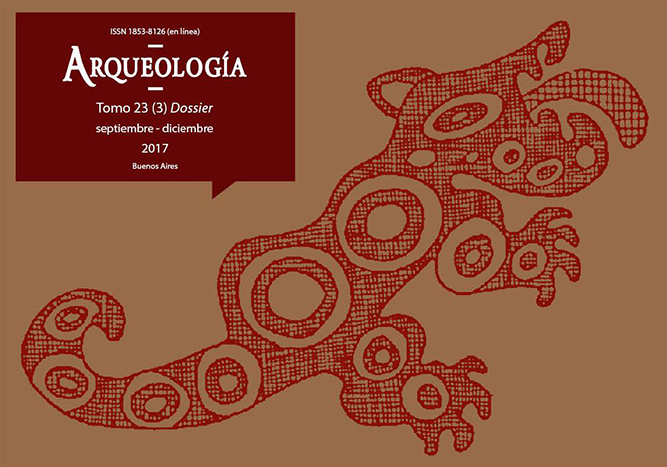Los ambientes acuáticos en arqueología
Palabras clave:
Ambientes marinos y fluviales, Poblaciones indígenas, Estrategias de explotación de los recursos, Intensidad de uso del ambiente
Resumen
En este trabajo se discute sobre la importancia de los ambientes acuáticos para el estudio del pasado en arqueología. Aunque el tema es abordado de modo global, el énfasis está puesto en sociedades con economías basadas en la caza, la recolección, la pesca y la horticultura a pequeña escala, y se ilustran con ejemplos arqueológicos mayoritariamente regionales de nuestro país y Sudamérica. El concepto de ambiente acuático es considerado en su sentido amplio, en el que se incluyen los ambientes marinos y del interior continental, de aguas quietas y de aguas corrientes, someras y profundas. Luego de una síntesis sobre el uso de los ambientes acuáticos a lo largo de la historia de la humanidad, el trabajo se enfoca en tres temas principales. Primero, en los modos y estrategias tecnológicas de explotación de los ambientes acuáticos (navegación, uso del agua, y explotación de minerales, plantas y animales). Luego, en los distintos grados de intensidad con que las sociedades humanas hicieron uso de estos entornos, para lo cual se definen y caracterizan cuatro modalidades principales (uso puntual, uso ocasional, uso sostenido y uso intensivo), se derivan algunas expectativas arqueológicas y se puntualizan algunos ejemplos. Por último, se resumen los aspectos principales de la relación entre los ambientes acuáticos y la comunicación y el simbolismo de las sociedades.Descargas
La descarga de datos todavía no está disponible.
Cómo citar
Prates, L., & Bonomo, M. (1). Los ambientes acuáticos en arqueología. Arqueología, 23(3), 11-33. Recuperado a partir de http://revistascientificas.filo.uba.ar/index.php/Arqueologia/article/view/4006
Sección
Artículos
Los autores/as que publiquen en esta revista aceptan las siguientes condiciones:
- Los autores/as conservan los derechos de autor y ceden a la revista el derecho de la primera publicación, con el trabajo registrado mediante Licencia Creative Commons 4.0 Internacional (CC-BY-NC-SA), que permite a terceros utilizar lo publicado siempre que mencionen la autoría del trabajo y a la primera publicación en esta revista.
- Los autores/as pueden realizar otros acuerdos contractuales independientes y adicionales para la distribución no exclusiva de la versión del artículo publicado en esta revista (p.e. incluirlo en un repositorio institucional o publicarlo en un libro) siempre que indiquen claramente que el trabajo se publicó por primera vez en esta revista.
- Se permite y recomienda a los autores/as a publicar su trabajo en Internet (p.e. en sus sitios web personales o en depósitos institucionales), tanto antes como después de su publicación en esta revista, siempre y cuando proporcionen información bibliográfica que acredite, si procede, su publicación en ella. De esta manera, pueden favorecerse intercambios productivos y a una mayor y más rápida difusión del trabajo publicado (vea The Effect of Open Access).



.png)

(1)13.png)






1.jpg)
1.png)
1.jpg)


13.png)
1.png)


(1)1.png)









